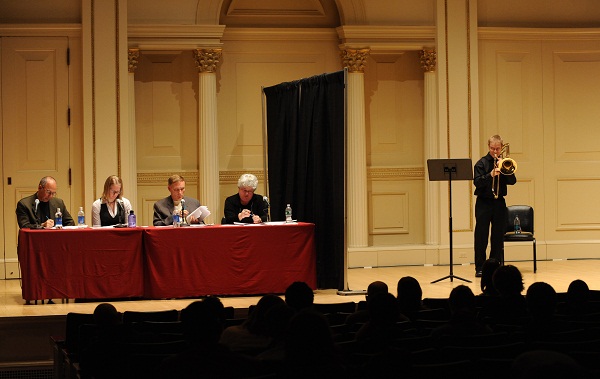
Two articles for my quick Monday thought:
This depressing article from the NYTimes by a researcher who has been documenting how selection criteria in corporate America suppress diversity. He finds that the practices of selecting applicants for “cultural fit” (a trend which accelerated in the 1980s) has morphed from focusing on traits that are relevant to corporate culture, to a new form of the “old-boys club” in which managers pick candidates who share their background, interests and hobbies. People they feel comfortable hanging out with. People, in other words, who resemble the existing power structure–largely white, male and affluent. This adds a disturbing new dimension to the already troubling literature documenting unconscious bias in hiring, because sanctioning “cultural fit” in hiring, without drawing careful boundaries around the practice, can institutionalize bias without overtly violating employment laws.
This NPR story gave me hope, however. It profiles GapJumpers, a company that facilitates blind auditions: offering job applicants a challenge to tackle, via the web, in order to rank and present the most promising candidates on their merits, not their resume (much less whether they like golf, or single malt scotch). It is a digital cousin to the practice orchestras began to adopt in the 1970s to combat gender bias. Turns out that placing auditioning players behind a screen made it 50% more likely that a female musician would be selected. For now, GapJumpers is offering blind auditions for software engineering, design, marketing and communications–what other positions might this approach address? I’ve blogged about my desire to hire via challenge–one of my challenges being how to create and administer a site that would “blind” me (as the employer) to the identity of applicants. A third party service like GapJumper might be just the ticket. I’ve contacted the company inviting them to talk to me about their approach, and I’ll report back on the conversation.
Meanwhile, spend some time (as I do) reflecting the attitudes you bring to the table when you interview candidates. It’s only human to want to hire someone who you like, feel comfortable around and will enjoy being cooped up with in an office for 40+ hours a week. How can you challenge yourself to select qualified candidates who don’t share your interests and life experiences, who may not feel socially comfortable with…at least not yet? How can you work with your HR staff to draw appropriate boundaries between selecting someone who is a good fit for your museum’s culture, and filtering out people who would challenge you to grow?
 |
| Blind audition at the Colorado Springs Philharmonic |
Monday musings are my way of sharing brief, off-the-cuff thoughts about something I have read recently, both to help clarify my thinking an in the hopes of generating discussion and response. I give myself 15 minutes or so to jot down a summary of the article(s) stuck in my brain, and outline why I think they may be important.









For about a decade I was hiring an entry-level position (12 month) on an annual basis. I always did my interviewing of candidates and references exclusively over the phone and would not meet candidates in person (even when they tried) to ensure that I wouldn't be biased by physical appearance). I would not google/facebook them either since I knew that any candidate would be background-checked in any case. . .but I admit that names/gender, university degree programs, hometowns, who one's professional references are–all such information is so highly subject to unconscious bias. But to be completely "blind" to such personal information is to miss out on who the candidate is and what they've accomplished! So, for me, I try to review an application and intentionally call myself out on what I rank as "pros" and "cons" knowing that I'm biased. I hope then maybe I can see past it. You can go into the hiring process deciding to privilege what is culturally different from you and understand that other experience can be less important or taught on the job if the interest and ability are there. . .good conversation, thanks!
Thank you for sharing your experiences, Kathleen. I agree its a really tricky balance, and as you say, being aware of your own reactions and thought processes, as you interview, is a good start. I'm trending towards taking the personal information (including things you can only judge face to face, such as interpersonal skills, if that is relevant to the job), into account once I've done a first pass at filtering application. And I am very attracted to the idea that Gap Jumpers is built around–starting with a challenge, rather than with the resume–to give people who might never have come to my attention a chance to shine. I hope more folks write in to share their strategies to achieve equitable hiring!